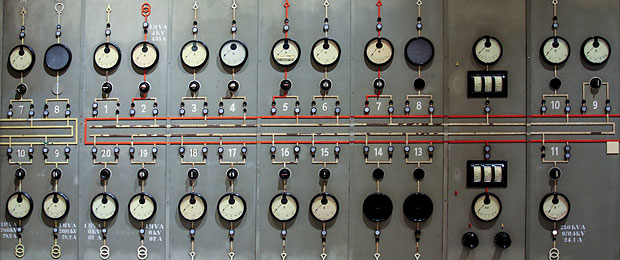- Microservices Without the Servers (Amazon) — By “serverless,” we mean no explicit infrastructure required, as in: no servers, no deployments onto servers, no installed software of any kind. We’ll use only managed cloud services and a laptop. The diagram below illustrates the high-level components and their connections: a Lambda function as the compute (“backend”) and a mobile app that connects directly to it, plus Amazon API Gateway to provide an HTTP endpoint for a static Amazon S3-hosted website.
- Privacy vs Data Science — claims Apple is having trouble recruiting top-class machine learning talent because of the strict privacy-driven limits on data retention (Siri data: 6 months, Maps: 15 minutes). As a consequence, Apple’s smartphones attempt to crunch a great deal of user data locally rather than in the cloud.
- NAS Backdoors — firmware in some Seagate NAS drives is very vulnerable. It’s unclear whether these are Seagate-added, or came with third-party bundled software. Coming soon to lightbulbs, doors, thermostats, and all your favorite inanimate objects. (via BetaNews)
- Most Consumers Wouldn’t Pay Publishers What It Would Take to Replace Mobile Ad Income — they didn’t talk to this consumer.
"devops" entries


Four short links: 8 September 2015
Serverless Microservers, Data Privacy, NAS Security, and Mobile Advertising


Four short links: 31 August 2015
Linux Security Checklist, Devops for Water Bags, Summarising Reviews, and Exoskeleton with BMI
- Linux Workstation Security Checklist — This is a set of recommendations used by the Linux Foundation for their systems administrators.
- Giant Bags of Mostly Water (PDF) — on securing systems that are used by humans. This is what DevOps is about: running Ops like you’re Developing an app, not letting your devs run your ops.
- Mining and Summarising Customer Reviews (Paper a Day) — redux of a 2004 paper on sentiment extraction from reviews.
- Brain-Machine-Interface for Exoskeleton — no need to worry about the “think of sex every seven seconds” trope, the new system allows users to move forwards, turn left and right, sit and stand simply by staring at one of five flickering LEDs.

Coding in a cloud-based enterprise
Mapping the future of development by designing for distributed architectures.

With the advent of DevOps and various Platform-as-a-Service (PaaS) environments, many complex business requirements need to be met within a much shorter timeframe. The Internet of Things (IoT) is also changing how established applications and infrastructures are constructed. As a result of these converging trends, the enterprise IT landscape is becoming increasingly distributed, and the industry is starting to map how all the various components — from networking and middleware platforms, to ERP systems and microservices — will come together to create a new development paradigm that exists solely in the cloud.

Towards continuous design
A deep integration across design, development, and operations is critical to digital business success.

I just finished reading Thomas Wendt’s wonderful book, Design for Dasein. I recommend it to anyone who practices, or just is interested in, experience design. Wendt’s ideas have profound implications for rethinking and improving our approach to designing experiences. They also have profound implications for how we think about DevOps, and its relationship to design, and how that relationship impacts the nature and purpose of digital business.
Design for Dasein introduces what Wendt calls “phenomenological design thinking.” This is a new approach to design that expands the designer’s attention beyond creating things that people use, to encompass thinking about the ways in which things influence, interact with, and are influenced by how people experience the world. Phenomenological design thinking reflects two key insights about the role of designed objects in peoples’ lives. First, designers create possibilities for use rather than rigid solutions. Wendt cites the example of using an empty coke bottle to hold open a door in an old, crooked apartment. By itself, the bottle wasn’t heavy enough to keep the door from swinging shut, so he filled it with pennies. At that point, the bottle suddenly had three overlapping uses: containing and drinking soda, holding opening one’s bedroom door, and storing spare change. Wendt’s point is that the designer does not entirely control the object’s destiny. That destiny is co-created by the designer and the user.


Four short links: 25 August 2015
Microservices Anti-Patterns, Reverse Engineering Course, Graph Language, and Automation Research
- Seven Microservices Anti-Patterns — One common mistake people made with SOA was misunderstanding how to achieve the reusability of services. Teams mostly focused on technical cohesion rather than functional regarding reusability. For example, several services functioned as a data access layer (ORM) to expose tables as services; they thought it would be highly reusable. This created an artificial physical layer managed by a horizontal team, which caused delivery dependency. Any service created should be highly autonomous – meaning independent of each other.
- CSCI 4974 / 6974 Hardware Reverse Engineering — RPI CS course in reverse engineering.
- The Gremlin Graph Traversal Language (Slideshare) — preso on a language for navigating graph data structures, which is part of the Apache TinkerPop (“Open Source Graph Computing”) suite.
- Why Are There Still So Many Jobs? The History and Future of Workplace Automation (PDF) — paper about the history of technology and labour. The issue is not that middle-class workers are doomed by automation and technology, but instead that human capital investment must be at the heart of any long-term strategy for producing skills that are complemented by rather than substituted for by technological change. Found via Scott Santens’s comprehensive rebuttal.

The cloud-native future
Moving beyond ad-hoc automation to take advantage of patterns that deliver predictable capabilities.

Can you release new features to your customers every week? Every day? Every hour? Do new developers deploy code on their first day, or even during job interviews? Can you sleep soundly after a new hire’s deployment knowing your applications are all running perfectly fine? A rapid release cadence with the processes, tools, and culture that support the safe and reliable operation of cloud-native applications has become the key strategic factor for software-driven organizations who are shipping software faster with reduced risk. When you are able to release software more rapidly, you get a tighter feedback loop that allows you to respond more effectively to the needs of customers.
Continuous delivery is why software is becoming cloud-native: shipping software faster to reduce the time of your feedback loop. DevOps is how we approach the cultural and technical changes required to fully implement a cloud-native strategy. Microservices is the software architecture pattern used most successfully to expand your development and delivery operations and avoid slow, risky, monolithic deployment strategies. It’s difficult to succeed, for example, with a microservices strategy when you haven’t established a “fail fast” and “automate first” DevOps culture.
Continuous delivery, DevOps, and microservices describe the why, how, and what of being cloud-native. These competitive advantages are quickly becoming the ante to play the software game. In the most advanced expression of these concepts they are intertwined to the point of being inseparable. This is what it means to be cloud-native.

It’s usability all the way down
Designing, building, and operating services from the perspective of customer goals helps improve quality.

We often tend to think about “usability” as applying to a separate layer of digital service from functionality or operability. We treat it as a characteristic of an interface which intermediates between the user and an application’s utility. Operational concerns such as performance, resilience, or security are even further removed. This approach gets reflected in siloed design-development-operations practices. From the perspective of service quality, though, I think it may be more constructive to view usability as a characteristic of service as a whole.
What is service, anyway? In the language of service-dominant logic, it’s something that helps a customer accomplish a job-to-be-done. From that perspective, usability refers to the customer’s ability to ‘use’ the service to accomplish their goals. Everything that contributes to, or compromises, that ability, impacts usability.


Four short links: 31 July 2015
Robot Swarms, Google Datacenters, VR Ecosystem, and DeepDream Visualised
- Buzz: An Extensible Programming Language for Self-Organizing Heterogeneous Robot Swarms (arXiv) — Swarm-based primitives allow for the dynamic management of robot teams, and for sharing information globally across the swarm. Self-organization stems from the completely decentralized mechanisms upon which the Buzz run-time platform is based. The language can be extended to add new primitives (thus supporting heterogeneous robot swarms), and its run-time platform is designed to be laid on top of other frameworks, such as Robot Operating System.
- Jupiter Rising: A Decade of Clos Topologies and Centralized Control in Google’s Datacenter Network (PDF) — Our datacenter networks run at dozens of sites across the planet, scaling in capacity by 100x over 10 years to more than 1Pbps of bisection bandwidth. Wow, their Wi-Fi must be AMAZING!
- Nokia’s VR Ambitions Could Restore Its Tech Lustre (Bloomberg) — the VR ecosystem map is super-interesting.
- Visualising GoogleNet Classes — fascinating to see squirrel monkeys and basset hounds emerge from nothing. It’s so tempting to say, “this is what the machine sees in its mind when it thinks of basset hounds,” even though Boring Brain says, “that’s bollocks and you know it!”


Four short links: 28 July 2015
Auto-Remediation, Fast and Good, Life's Game of Conway, and Self-Assembly Lab
- Nurse at LinkedIn — automating the responses to alerts.
- Moving Fast With High Code Quality (Quora) — Lots of practical detail about how they combine speed with quality.
- John Horton Conway (The Guardian) — These were two separate areas of study that Conway had arrived at by two different paths. So, there’s no reason for them to be linked. But somehow, through the force of his personality, and the intensity of his passion, he bent the mathematical universe to his will. Fascinating profile, taken from a new book.
- MIT Self-Assembly Lab — multi-material 3D/4D printing, advances in materials science, and new capabilities in simulation/optimization software […] made it possible to fully program a wide range of materials to change shape, appearance, or other property, on demand.


Four short links: 27 July 2015
Google’s Borg, Georgia v. Malamud, SLAM-aware system, and SmartGPA
- Large-scale Cluster Management at Google with Borg — Google’s Borg system is a cluster manager that runs hundreds of thousands of jobs, from many thousands of different applications, across a number of clusters, each with up to tens of thousands of machines. […] We present a summary of the Borg system architecture and features, important design decisions, a quantitative analysis of some of its policy decisions, and a qualitative examination of lessons learned from a decade of operational experience with it.
- Georgia Sues Carl Malamud (TechDirt) — for copyright infringement… for publishing an official annotated copy of the state's laws. […] the state points directly to the annotated version as the official laws of the state.
- Monocular SLAM Supported Object Recognition (PDF) — a monocular SLAM-aware object recognition system that is able to achieve considerably stronger recognition performance, as compared to classical object recognition systems that function on a frame-by-frame basis. (via Improving Object Recognition for Robots)
- SmartGPA: How Smartphones Can Assess and Predict Academic Performance of College Students (PDF) — We show that there are a number of important behavioral factors automatically inferred from smartphones that significantly correlate with term and cumulative GPA, including time series analysis of activity, conversational interaction, mobility, class attendance, studying, and partying.